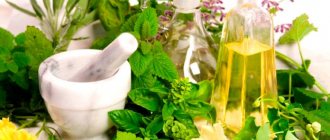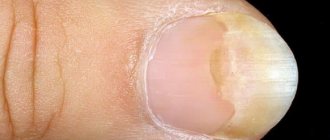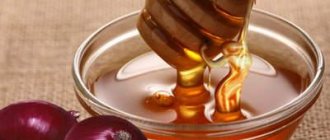Types and features of treatment
Sore throat can be:
- catarrhal;
- herpetic;
- candida;
- follicular and lacunar;
- fibrinous tonsillitis;
- phlegmonous;
- necrotic;
- ulcerative-membranous.
The treatment method for sore throat depends on its type and causative agent: only by identifying the characteristics of the disease can you select medications and folk remedies.
General recommendations to cure a sore throat:
- During illness, stay in bed.
- On days of exacerbation, do not eat solid food, which can injure the inflamed tissues of the throat.
- A sick baby should constantly drink fortified warm drinks: tea, juice, compote, fruit drink.
- Give the child neck compresses when the lymph nodes are enlarged.
- Regularly gargle with solutions to reduce swelling of the mucous membrane.
The video of the Doctor Komarovsky channel tells how to treat a sore throat.
Catarrhal sore throat
Catarrhal tonsillitis is a lesion of the tissues of the pharyngeal ring. Parents of a child can easily confuse acute tonsillitis with ARVI. It develops within 1-4 days, and in most cases the causative agent is streptococcus.
Symptoms of catarrhal tonsillitis:
- dryness and sore throat;
- viscous mucus in the mouth and throat;
- rapid rise in temperature;
- pain when swallowing;
- loss of appetite;
- severe headaches;
- enlargement of the cervical and submandibular lymph nodes;
- low-grade fever.
If catarrhal sore throat turns into purulent inflammation, there will be consequences:
- chronic tonsillitis;
- otitis;
- sinusitis;
- phlegmon of the larynx;
- retropharyngeal abscess;
- rheumatic heart disease;
- sepsis;
- encephalitis.
Treatment of catarrhal tonsillitis is carried out using antimicrobial drugs of several groups:
- penicillins;
- cephalosporins;
- macrolides.
In addition, to alleviate the symptoms of the disease, the doctor prescribes medications:
- antipyretic Panadol (for children under 6 years old in capsules), eliminating symptoms of fever;
- non-steroidal anti-inflammatory drugs, for example, Ibuklin (children over 12 years old);
- antiseptic gargles;
- Ingalipt inhalation solution (children under 4 years old);
- probiotic Bifiform (children over 1 year).
Follicular tonsillitis
Follicular tonsillitis is characterized by inflammation of the tonsils. The disease is caused by staphylococci and streptococci. This type of sore throat is rare in newborn babies; most often children over 3 years old are at risk of getting it.
Symptoms:
- inflammation, enlargement and swelling of the tonsils;
- purulent foci above the follicles;
- loss of appetite due to excruciating sore throat;
- speech disorder;
- weakness and lethargy;
- high fever;
- bad breath;
- enlargement of the submandibular and cervical lymph nodes;
- in case of severe disease, nausea and diarrhea are observed.
General recommendations for treatment are the same as for catarrhal tonsillitis. For the most part, a sick baby stays at home and follows the doctor’s orders on an outpatient basis. Only children under 1 year of age need to be in the hospital under the constant supervision of a doctor.
For good heat transfer, parents should not put diapers or synthetic clothing on their child. It is best for your baby to wear cotton pajamas, as this material allows sweat to evaporate easily.
Specifics of treatment:
- If the temperature rises above 38 degrees, the child should be given an antipyretic.
- Follicular tonsillitis is caused by staphylococcus bacteria, so for treatment it is necessary to take penicillin antibiotics.
- Drug therapy lasts a week, even if the child’s condition stabilizes after a few days.
- To gargle, you can use saline solutions and medicinal decoctions of chamomile and sage flowers.
- As an anti-inflammatory drug, you can use Givalex, Tantum Verde aerosols and Lisobact lozenges. They can be used even by little ones.
- To reduce the symptoms of intestinal upset, take Lactobacterin, Simbiter (can be given to infants).
Lacunar tonsillitis
Lacunar tonsillitis is a contagious disease that is characterized by damage to the lymphatic tissues of the pharyngeal ring.
Infection occurs:
- nutritionally;
- by airborne droplets;
- by contact.
The cause of the disease is bacteria:
- group A streptococci;
- meningococci;
- pneumococci;
- Klebsiella;
- Haemophilus influenzae.
Symptoms:
- lethargy, weakness and apathy;
- dryness and sore throat;
- intestinal problems (vomiting, diarrhea);
- pain when swallowing;
- suppressed appetite;
- heavy sweating;
- suppuration on the tonsils;
- swelling of the palate and oropharynx.
The stages of treatment for sore throat in children of any age are the same. The exception is children under 2 years of age. They are unable to gargle on their own and hold their breath using aerosols.
Specifics of treatment:
- The child is given etiotropic medications (antibiotics) that destroy the effect of pathogenic flora.
- The baby must also take a course of medications that suppress the symptoms of an ENT disease.
- To stabilize heat exchange, the child should be put on cotton pajamas and given antipyretics.
- To eliminate pathogenic microbes, the doctor prescribes physical therapy. The affected areas of the throat are exposed to UV radiation, heating, or inhalation. Physiotherapeutic procedures do not replace drug treatment, but are carried out in parallel.
Fungal tonsillitis
Candidal tonsillitis negatively affects the lymphadenoid pharyngeal ring, and in case of complications of the disease, foci of inflammation form not only on the tonsils, but also in the oral mucosa. The cause of the disease is the fungus Candida or Aspergillus and staphylococci.
Causes of the disease:
- poor nutrition;
- uncontrolled self-medication with antibiotics;
- chronic ENT diseases;
- anemia;
- hypovitaminosis;
- diabetes;
- abuse of corticosteroids.
Symptoms of the disease:
- mild intoxication of the body;
- headache;
- general malaise;
- sore throat;
- low-grade fever.
Acute fungal inflammation is accompanied by spots in the oral cavity. White spots indicate the development of yeast-like fungi, and green or yellowish ones indicate moldy ones.
Specifics of treatment:
- First you need to stabilize the microflora.
- If the disease has developed due to the abuse of antibiotics, the doctor may replace them with antimycotics. They suppress the viability of fungi.
- Your doctor may prescribe ultraviolet light treatment to kill the fungus.
- The child must maintain a diet high in vegetables and fresh fruits, proteins, and dairy products.
- In addition, the baby should take vitamins, antipyretics and immunostimulants during treatment.
How does sore throat begin in children?
The incubation period of the disease is short - from a couple of hours to 3 days. The disease manifests itself rapidly. Regardless of the type - catarrhal tonsillitis, lacunar, fibrinous, its symptoms are the same:
- Sore throat - at first it is difficult for the child to swallow, he refuses to eat. Later the pain becomes permanent.
- High temperature – up to 39 C and above. The temperature rises very quickly, accompanied by fever;
- The tonsils, arches and soft palate are swollen and red.
- The child complains of a headache, weakness, is capricious and cries for no reason.
- The submandibular nodes enlarge and become painful to the touch.
At an older age - from 7 years, chest pain appears and blood pressure decreases.
After 1–2 days, specific signs appear: white plaque on the tonsils with viral tonsillitis, purulent discharge with lacunar tonsillitis, round purulent dots with follicular tonsillitis.
How long does it take to treat, how many days
Children under 10 years of age are more susceptible to infectious diseases, since their immune system is not yet fully functional. They get sick longer. Children are usually treated at home, but children under 3 years of age are hospitalized, as are those who suffer from severe congenital illnesses.
If an unfavorable situation regarding the incidence of diphtheria remains in the region, children are hospitalized regardless of age and type of sore throat.
The duration of treatment determines the type of tonsillitis. If the catarrhal form is diagnosed in time, the disease can be cured within 3 days. Purulent forms require long-term treatment - at least 10-14 days. However, in children, the catarrhal form very often turns into lacunar or follicular and treatment is delayed.
Is it possible to get rid of it forever?
Tonsillitis causes the proliferation of pathogenic bacteria or viruses - usually staphylococci and streptococci. Most of them live in the human body. Under normal conditions, they multiply slowly and do not pose a danger: the excess is immediately destroyed by the immune system.
However, in a weakened child, the immune system is too poorly developed. Any hypothermia, wet feet, eaten ice cream, or a cold ear provokes the proliferation of pathogenic microflora and the occurrence of a sore throat. In essence, the treatment replaces the work of the immune system, that is, it suppresses the proliferation of bacteria, but does not completely destroy them, since they are components of the natural environment.
There is only one way to get rid of a sore throat forever: take care of your immune system. To do this, you need to reconsider your lifestyle: change your diet, increasing the amount of proteins and reducing the amount of carbohydrates, include walks in the fresh air in your daily routine, strengthen your child, and organize available physical activity.
Drug treatment
For angina, antibiotics of the amoxicillin and penicillin groups are often prescribed:
- Augmentin - children over 12 years old or weighing more than 43 kg;
- Amoclav - for children from 3 months, following the dosage;
- Amoxiclav – for babies from 3 months, dose – 30 mg/kg in 2 doses, from 3 months – 20 mg/kg;
- Sultamicillin - children up to 30 kg - 25-50 mg/kg for 2 doses;
- Solutab – for children under one year of age 30-60 mg/kg. Divide into 3 doses per day.
If a child is allergic to penicillin, the doctor prescribes macrolides:
- Azitrox – for children under 12 years of age or weighing less than 43 kg;
- Sumamed - for children under 12 years of age in the form of a suspension, after 12 years - in the form of tablets;
- Hemomycin – for children over 12 years of age;
- Spiramycin - for children weighing over 20 kg, dose per day is 150-300 thousand IU/kg/day;
- Macropen - for babies weighing less than 30 kg, a dose of 20-40 mg per body weight.
Inhalers and sulfonamide antimicrobial agents are prescribed. If after a few days the child’s condition does not improve, the doctor prescribes strong medications.
Before this you need to take eubiotics:
- Acipol - for children from 3 months to 3 years, the dose is 1 capsule with meals. Open it and dissolve the contents in liquid;
- Lactobacterin - babies up to 6 months 3 doses 2 times a day, from 6 months to 3 years - 3 doses 2 times a day, children older - 5 doses 2 times a day;
- Biobakton - 2-3 doses are recommended for children, and 5 doses for older children over 14-25 days;
- Linex – for children under 2 years old, 1 capsule for 3 days, for children 2-12, take 1-2 capsules 3 times a day;
- Bifiliz – for children – 1 bottle 1-2 times a day.
Throat medications
Pharmaceutical gargles:
- Orasept (children over 2 years old);
- Lugol (from birth);
- Miramistin (children over 3 years old);
- Antiangin (children over 11 years old);
- Cameton (contraindicated in children under 5 years of age).
Kameton (price: 45-101 rubles)
Miramistin (price: 200-765 RUR)
Lugol (price: 86-142 rubles)
You can prepare a mouth rinse based on a pharmaceutical solution:
- hydrogen peroxide solution 3% (children over 3 years old);
- boric acid solution 2% (allowed even for newborns);
- iodinol solution 1% (children over 6 years old);
- Rotokan (contraindicated for children under 12);
- Stomatophyte (children over 6 years old);
- an aqueous solution with the addition of iodine and salt (children over 5 years old).
You can give your child special lollipops that will relieve inflammation in the throat:
- Septolete (contraindicated in children under 4 years of age);
- Grammidin (exception – children under 4 years of age);
- Doctor Mom (children from 3 years old);
- Strepsils (indicated for children over 5 years old).
Grammidin (price: 371-391 rubles)
Doctor Mom (price 156 RUR)
Septolete (price: RUR 211-319)
Strepsils (price: RUR 174-320)
Antipyretics
To reduce fever, these drugs are used:
- Ibuprofen (children over 14 years old);
- Paracetamol (children from 2 months);
- Calpol (children from 3 months);
- Efferalgan (children at least 12-13 years old and weighing more than 43 kg);
Taking medications to lower your temperature should not last more than three days.
Ibuprofen (price: 21 - 100 rubles)
Paracetamol (price: 3 - 81 r)
Efferalgan (price: 78 - 173 rubles)
Contraindications and advice for use
When using drugs, you should consider:
- Individual intolerance to certain components, as well as increased sensitivity to them.
- Some throat ointments should be used with caution; in large quantities, drugs can cause an allergic reaction and thyrotoxicosis, as well as swelling of the walls of the gastric mucosa.
- Aerosols should not be used by children under 12 years of age.
- Lymphoid tissues and immunity in children under one year of age are just developing, so babies cannot fully resist the disease. At this age, antibiotic doses must be carefully monitored. The dose is calculated depending on the age and weight of the baby.
Is a sore throat a sore throat?
Sore throat is a bacterial disease that is most often caused by streptococcus. A feature of this disease is the rapid onset of the disease with severe intoxication and a sharp deterioration in the condition of the baby. With a sore throat, purulent plaque on the tonsils is always detected.
Lymphoid tissue is endowed with the ability to protect our body from pathogens. It can be found in the nasal and oral cavity, intestines, bone marrow, and thymus gland. In the upper respiratory tract, lymphoid tissue is represented by tonsils, which stand in the way of infection and prevent microbes from entering the body. Often the palatine tonsils are attacked by viruses and bacteria, with the development of inflammation in them - tonsillitis.
Although tonsillitis is considered to be a specific inflammation of the tonsils caused by streptococcus, in a broad sense, tonsillitis includes inflammation of the palatine tonsils of any etiology. Tonsillitis accompanies many bacterial and viral diseases, infections of the ENT organs.
The cause of sore throat in children is most often streptococcus; sometimes specialists detect a combination of streptococcal and staphylococcal infections. Less commonly, children with tonsillitis are diagnosed with the presence of diplococci, pneumococci, enteroviruses, and fungi.
Traditional methods of treatment
Treatment of sore throat in children at home with folk remedies should also be discussed with a doctor.
Chamomile
Chamomile is a natural antiseptic that is used in many folk recipes.
Method for preparing a rinse solution:
- Take chamomile, eucalyptus, marigold flowers.
- Grind the ingredients and mix.
- Dilute 1 tablespoon of the resulting mass with 2 cups of boiling water.
- Cook for a few minutes over low heat.
- Leave covered for half an hour.
- Strain.
- Divide the resulting solution into two parts.
- Gargle 2 times a day, gradually reducing the temperature of the solution by 1 degree.
Mustard
Method of preparing a compress:
- Chop six cloves of garlic in a suitable bowl.
- Add two tablespoons of mustard seeds to the mixture.
- Pour the mixture with six tablespoons of sunflower oil.
- Grind everything thoroughly.
- Place the mixture on the baby's chest and distribute evenly.
- Cover with film and wrap with a scarf or handkerchief.
- Keep the compress for 60 minutes.
- Wipe the child's body with a warm, damp towel.
- Continue until the cough goes away.
Propolis
Propolis helps in the treatment of tonsillitis. The child needs to put a small slice of the product behind his cheek and leave it overnight.
Beet
You can prepare a useful solution for gargling from beets:
- Grate medium-sized beets on a fine grater.
- Squeeze the juice out of the resulting mass.
- Add a tablespoon of vinegar to a glass of juice.
- Gargle with the solution five times a day.
- Continue the procedure until complete recovery.
Kalanchoe
Rinse recipe:
- Wash and chop a few Kalanchoe leaves.
- Squeeze out the juice.
- Mix half and half with water.
- Leave in a dark place for 24 hours.
- Gargle several times a day.
Traditional methods of reducing temperature
It is necessary to prepare a clean towel, moisten it in water and dry the child. Using alcohol, vodka, or vinegar to wipe children is strictly prohibited. You need to give a lot to drink; decoctions of black currants, cranberries and raspberries will help. Drinking will increase sweating, which will help lower body temperature.
Kerosene
Useful properties of kerosene for sore throat: anti-inflammatory, analgesic, kills parasites and gets rid of infection. But there is a high risk of burns and poisoning. It must be used very carefully so as not to harm your health. If possible, it is better to resort to other methods of treatment.
Important! Treating tonsils with kerosene is a very complex process that can have serious consequences. And when rinsing with the prepared kerosene solution, the child may accidentally swallow some amount of liquid. Although traditional medicine strongly recommends this remedy, preference should be given to safer drugs when treating adults. Kerosene should not be used by children.
Vitamins
You also need to give your child more foods that contain vitamins. Since it is difficult to swallow with a sore throat, it is recommended to make purees based on fresh fruits and vegetables, cook compotes, fruit drinks, and squeeze fresh juices.
What can you eat and drink with a sore throat?
If you have a sore throat, it is useful to drink:
- warm tea with lemon and honey;
- jelly;
- fruit juices;
- warm milk;
- fruit drinks;
- boiled water;
- broths.
The diet may include:
- porridge;
- boiled grated food;
- White bread;
- dairy products;
- boiled eggs;
- vegetable stew;
- baked fruit.
It is necessary to exclude from the diet:
- solid food;
- salty;
- sour;
- roast;
- hot.
When should antibiotics be used?
When treating streptococcal sore throat, antibiotics are mandatory.
Penicillin drugs that can destroy pathogenic microorganisms within 10 days will be effective: Amoxiclav, Augmentin, Ampicillin, Amoxicillin, Flemoxin, Solutab.
For allergies to penicillins, antibiotics from other groups are used: Macropen, Sumamed, Vilprafen.
If a sore throat occurs in a child aged 1–3 years, as well as in severe cases of the disease, hospitalization in a hospital is recommended.
As a result of properly selected antibacterial therapy, the patient's condition improves quickly.
Video
The author of the video, JitZdorovo, will tell you how a sore throat is treated.
Do you have any questions? Specialists and readers of the KROHABABY website will help you ask a question
Was this article helpful?
Thank you for your opinion!
The article was useful. Please share the information with your friends.
Yes (100.00%)
No
X
Please write what is wrong and leave recommendations on the article
Cancel reply
Rate the benefit of the article: Rate the author ( 2 votes, average: 5.00 out of 5)
Discuss the article:
Causes of purulent sore throat
Purulent tonsillitis is an infectious disease. The reason for its occurrence is the activation of pathogenic microorganisms (staphylococci, streptococci, etc.). The main causative agent of purulent sore throat in a small child is β-hemolytic streptococcus. Even in a healthy child, this pathogenic microflora is present in small quantities on the mucous membranes of the nasopharynx. This is a variant of the norm, and the presence of microorganisms in this case is not dangerous.
A child becomes ill when pathogenic microflora is activated, for example, due to previous infectious diseases (influenza, ARVI), as well as other reasons:
- the first reason is weakened immunity, when the child’s body’s defenses are not enough to counteract pathogens;
- the second reason is dental diseases (caries, gum disease, etc.). Infection from carious teeth can easily spread to the tonsils, causing them to become inflamed. Therefore, it is necessary to treat diseased teeth in a timely manner and visit the dentist regularly.
- hypothermia is a common cause of tonsillitis in young children; sometimes getting your feet wet is enough for the first symptoms of the disease to appear;
- unbalanced diet (unhealthy food is one of the reasons for decreased immunity in a small child);
- another reason is unfavorable living conditions, for example, in areas with poor ecology;
- high fatigue - to prevent increased fatigue from becoming the cause of the disease, it is necessary to observe a sleep and rest schedule in young children.
Purulent tonsillitis is a very contagious disease. If one child gets sick in kindergarten, most will get sick. Doctors call such diseases a highly contagious disease.
A small child can get sick in two ways – airborne and household contact. The cause of infection by airborne droplets is contact with another sick child or adult. Bacteria are spread through the air from a person sneezing or coughing or while talking.
The cause of the disease may also be the use of the patient's personal items. It is enough for a small child to play with the toys of another sick child for the typical signs of purulent tonsillitis to appear after some time. The occurrence of the disease can also be triggered by the use of the patient’s dishes or towels. This is how the causes of infection through contact and household methods manifest themselves.
When you can't avoid hospitalization
- State of severe intoxication:
- high temperature that is not reduced by antipyretics;
- nausea, possible vomiting;
- convulsions;
- slurred speech;
- impaired breathing;
- inability to swallow food or liquid.
- The child has a history of diagnoses that aggravate the course of the disease and slow down recovery: diabetes mellitus, renal failure, asthma, blood clotting disorders.
- No urination for 12 hours or longer. It is a symptom of the development of the initial stage of renal failure.
- Infants, especially the first months of life, are at increased risk. Treatment of children at this age is not recommended at home; doctor's supervision is mandatory.
- The occurrence of complications, such as rheumatoid arthritis or abscess.
The use of honey in the treatment of illness
A natural component that is used in the treatment of most colds and infectious diseases, without side effects, is honey. Its use in the treatment of sore throat is difficult to overestimate. Honey is used in drinking and for making medicinal compresses.
The product of bee work helps relieve the inflammatory process, prevents the further development and spread of infection to the organs of the respiratory system. Any honey is useful, but for the treatment of sore throat it is recommended to use honey from linden, clover, acacia and sage.
To relieve pain in the throat and relieve inflammation, it is recommended to eat several teaspoons of honey a day, but then you should not drink or eat for 1 hour. Honey coats the mucous membrane of the throat and tonsils, relieving pain and other symptoms of the disease. It is recommended to add honey to warm tea.
Some of the most effective folk recipes in the treatment of sore throat are milk, butter (butter) and honey. The milk is heated, a few teaspoons of honey and butter are added to it. To cope with an unpleasant disease as quickly as possible, you need to add a few drops of aloe juice to honey and take the remedy every time before the main meal.
Honey is also used to gargle sore throats. It must be dissolved in heated water (temperature no more than 40ºС). To achieve the fastest possible effect, add a few drops of apple cider vinegar to honey water. The solution with honey and vinegar can be taken orally, drinking in small sips every time after meals.
Local therapy
Local treatment for sore throat is almost always prescribed. Indeed, with additional influence on the affected tonsils, their cleansing and disinfection, the course of the disease is not only alleviated, but also recovery occurs quickly. One of the most popular means of such therapy is gargling. To carry out this procedure, you can make salt, soda, herbal, furatsilin solutions. All of them help to clear a sore throat not only of purulent plaque, but also of pathogenic bacteria, which spread quite quickly. However, one of the most controversial issues that arises in the treatment of tonsillitis is gargling with kerosene.
There are many supporters and opponents of treating sore throat with kerosene. The method is quite radical and even dangerous. Of course, there are many forums where parents, with the fury of a tigress, will prove that only with kerosene they were able to heal purulent tonsillitis, this is one of the most effective methods of combating the disease and that the disease went away quickly (literally in a day). However, before asking your baby to gargle or lubricate his throat with kerosene, you should think carefully and weigh the pros and cons several times. It may be better to use traditional means: rinses, inhalations, antibiotics.
Anything can happen when treating with kerosene. It is very difficult to control children, they can swallow it, inhale too much vapor, choke, as a result of which kerosene poisoning can occur and intoxication, which is inherent in tonsillitis, will intensify. No doctor will recommend kerosene treatment, so the responsibility for deciding on such therapy falls entirely on the parents.
Application of compresses
Warming compresses can be applied to the throat only in the early stages of the disease. If foci of purulent inflammation appear on the tonsils and mucous membrane of the larynx, using compresses to treat a sore throat is strictly prohibited. The best time for the procedure is before bedtime, so that the child does not walk around and goes straight to bed.
Apply the compress only to the throat, avoiding the area where the thyroid gland is located. The easiest to prepare and effective method of warming a sore throat and relieving the symptoms of a sore throat is an alcohol compress. To prepare it, you need to moisten gauze folded several times in medical alcohol diluted with water. Apply the bandage to the throat, securing it with a bag or film on top, and wrap it with a warm scarf or handkerchief. For greater effectiveness, you can add a few drops of lavender or eucalyptus essential oils to the alcohol. Keep the compress for no more than an hour.
Potatoes are an ingredient that has been successfully used in the treatment of this disease. Boiled potatoes (cook the vegetable without removing the peel) are crushed, a few drops of iodine and sunflower oil are added to the resulting puree. The resulting pulp is wrapped in gauze, placed on the neck and wrapped in thick cloth. You can apply potatoes to the skin only after the puree has cooled a little and does not cause a strong burning sensation. You can leave the mashed potato compress until the morning.
For compresses, you can use raw potatoes, which are grated, and a little table vinegar (6%) is added to the resulting pulp.











